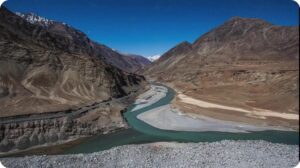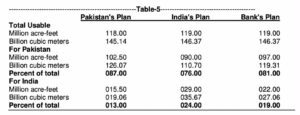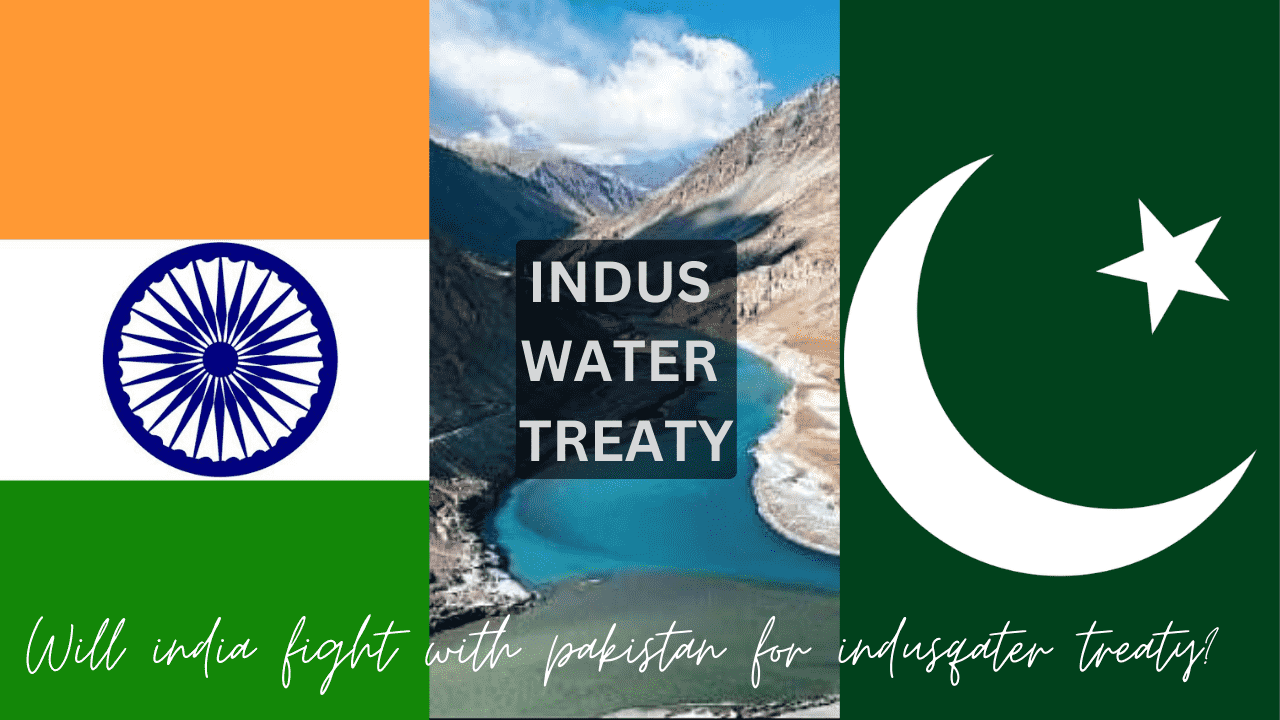Will Pakistan reply to India’s Indus Water Treaty notice within 90 days?
India has one of the biggest weapons against Pakistan, a weapon that is more powerful than nuclear weapons. Which can make Pakistan’s life impossible in a single move, but till date we have never used it. The name of this weapon is water. Rivers in Pakistan pass through India. And we have been giving our water to Pakistan for the last 75 years. That, too, is not 50-50, but 80% water, so we happily say goodbye. But why? Because of the Indus Water Treaty.
What is Indus Water Treaty?
A month ago, India sent a notice to Pakistan, and now Pakistan has 90 days to reply. If Pakistan does not respond properly to this notice, then India can leave the Indus Water Treaty. Why is this treaty so important? East Pakistan, West Pakistan and India were divided into what parts of India by the British in 1947. But this is not only the land but also how things were divided, like water, the military, IAS officers, and natural resources. This is the Sindhu river, which passes through India to Pakistan and then joins the Arabian Sea. Who had the right to the water of these rivers? What about canals, bridges, and waterworks built in the British area? Who will benefit from them? A lot of fights took place over these simple things.

At the time of partition, the major canals of Punjab were built by the British, who came to India. So how much water will be released from these canals in Pakistan? A Punjab Partition Committee was formed to decide this. But no results came from this. After partition, there were tensions between India and Pakistan. Violence was happening on both sides of the border. We are at war with Pakistan as a result, in 1948, the engineers of Indian Punjab stopped the water. He asked a correct question: On one side, we are fighting a war with Pakistan; they are attacking Kashmir, and on the other, we are giving water by becoming great saints. And this is what our children are yearning for; why is this happening now? Before the Green Revolution, India was not self-sufficient in food. Was living on a foreign ad. There was complete chaos in Pakistan when the water stopped, and the government of Pakistan came to negotiate. And a temporary agreement was signed. Remember, this was a temporary agreement.
 In West Punjab, i.e., Pakistan’s side of Punjab, they had asked India for some time. So that he can find alternative sources of water. This cycle continued for the next two years, and then this overly smart person came in between; this is David Lilienthal. Which changed the course of the story. He wrote an article, “India and Pakistan: Another Korea in the Making,” in which he said that there could be a war between these two countries because of water. They forgot that even without water, our two countries were already fighting. David Lilienthal said that this is not a political issue but a technical one. Together, engineers can solve this issue. The President of the World Bank read this article and was impressed. He said that “I recommend that the bank lend its good offices to find out a solution to the Indus Waters dispute.”
In West Punjab, i.e., Pakistan’s side of Punjab, they had asked India for some time. So that he can find alternative sources of water. This cycle continued for the next two years, and then this overly smart person came in between; this is David Lilienthal. Which changed the course of the story. He wrote an article, “India and Pakistan: Another Korea in the Making,” in which he said that there could be a war between these two countries because of water. They forgot that even without water, our two countries were already fighting. David Lilienthal said that this is not a political issue but a technical one. Together, engineers can solve this issue. The President of the World Bank read this article and was impressed. He said that “I recommend that the bank lend its good offices to find out a solution to the Indus Waters dispute.”
Why did the World Bank come in between? Why did India and Pakistan allow the World Bank to come in between? This is our mutual matter, and we should have understood it amongst ourselves. But the governments of both countries have proved that we are not capable of taking decisions on our own. Here, Jawahar Lal Nehru ji did a good thing by stopping the World Bank from getting involved in the Kashmir issue. He said that this is the issue of Punjab and has nothing to do with the issue of Kashmir. An Indus Water Treaty was signed in 1960, and after that, we never touched this treaty, despite 4 wars between India and Pakistan. What is it like in this treaty? let’s know
What does Indus Water Treaty do?
Basically, what the Indus Water Treaty does is divide the water of the rivers between India and Pakistan. The Indus Water Treaty stipulates how much water India can get and how much water has to be released to Pakistan. For this treaty, rivers are of two types, the Eastern River and the Western River. India has 100% control over the Eastern Rivers. And of Pakistan on the western reverse. It is clearly written in the treaty that if we use the water of Western Rivers for hydropower, then we will have to release this water back into the river within 24 hours. This is called “Run of the River Power Projects.” India controls the Ravi, Beas, and Sutlej rivers. This is why Pakistan has no control over the flow of these rivers. We have full freedom to build dams or water storage structures on these 3 rivers. On the other hand, the Indus, Jhelum, and Chenab come into Pakistan’s share, and out of these we can use water only for limited purposes. On the surface, this treaty seems quite fair. Air for 3 rivers Pakistan, 3 rivers for India. But 80% of the water of the Indus rivers is in the Western Rivers, i.e., the Indus, Jhelum, and Chenab; through this treaty, 80% of the water has gone to Pakistan. And Britishers made all the canals in India, so through this treaty, we had to pay 62 million pounds to Pakistan so that it could use this money to make canals toward Pakistan. A poor country like India had to pay a heavy price for water.
A permanent Indus Commission has been formed to see whether the Indus Water Treaty is being followed or not, so that they can keep an eye on both countries. And was able to shortcut the problem. Members of the commission can plan visits. To view the water storage side, dam, and canal. So the provisions of the treaty on insurance are being followed. With this commission, 118 visits have been planned in the last 60 years. If there is a complaint that the treatment is not being followed, then a three-tiered dispute resolution system has been mentioned in this treaty: question, difference, and dispute. The first stage is asking the question. Where one country can take a ride on the action of another country. If both countries have not been able to solve this at their level, then it takes the form of a difference. Then the World Bank comes in between. This so-called neutral expert is a technical expert who has knowledge of water engineering. Before that, many differences like those between neutral experts have been solved. For example, in 2007, India wanted to start a 450 MW hydroelectric power project on the Chenab river. Pakistan raised objections to this project. Then a neutral expert came and verified the details of the project and made minor modifications. To compensate for this hydroelectricity project, he gave more water to Pakistan. If even such an expert cannot solve this issue, then the difference turns into a dispute.
To resolve the dispute, both countries have to go to the International Court of Arbitration, i.e., the Netherlands. This court will hear both sides, see the representation and technical study, and then pass its decision. For example, India wanted to build the Kishanganga Power Project on the Chanab River. But in 2011, Pakistan filed a complaint with the Court of Arbitration. Not the court; he asked the high-power project to work and dismissed the objection of Pakistan. And slightly modified the design of India so that the flow of water does not work. All this is fine, but what is the issue now? The real issue is happening since last few years. In 2015, Pakistan demanded a neutral expert from the World Bank to protest against the Kishanganga Power Project and Ratle Hydroelectric Power Project. India accepted the demand for a neutral power project,
In 2016, Pakistan unilaterally withdrew this demand and demanded that the court of arbitration hear this thing. That is, Pakistan tried to skip the second step and go directly to the third step, and the World Bank gave the green light to both the neutral expert and the court of arbitration. The treaty itself says that when the neutral expert is giving his opinion, the court of arbitration cannot proceed. There is no need to leave the 2nd step and go to the 3rd step. If both of these parties give their opinions, then whose opinion will be correct? The only task of the World Bank is to see whether the provisions of the treaty are being followed or not. The World Bank has no veto power over who is right and who is wrong. The World Bank had paused this process after India’s protest, but mysteriously, in 2022, this process started again. In protest of this issue, India sent a notice of an amended treaty to Pakistan. He said that we have to change this treaty. International media celebrate this treaty as an example of cooperation. But the truth is that we make compromises, which is why this Troy is going on till today.
When it comes to rivers, you can divide them into riparian and lower riparian areas. In the case of the Brahmaputra, China is the upper riparian, India is the middle riparian, and Bangladesh is the lower riparian. There is always an upper hand near the upper riparian zone. That water can change direction completely, and that dam and water storage structure can stop the flow. In the case of the Indus Water Treaty, India is the upper structure riparian, that is, India has the upper hand, and the treaty tries to strike a balance in such an equation. But the funny part is that no other country in the world has an agreement like this with any other country. The leadership of Pakistan often blames the problem of its Surrey water on the Indus Water Treaty. They are getting 80% more water under this treaty. Still, he demands more control. If there is a fence in Pakistan, then they blame India because we are releasing more water from our rivers. If there is a drought in Pakistan, then they blame India. That we are stopping the flow of our rivers. Because of this treaty, India cannot make any decisions for its people inside its borders. Because Pakistan has an objection to everything.
India’s next steps?
If you read about Indus Water Treaty, you will see two types of opinion.
- Type 1: it says that if we cannot break the Indus Water Treaty, our international border will be cut. They say that if we choke Pakistan on the topic of water, So tomorrow, China will also choke us. But they don’t forget that China doesn’t talk about international organizations anyway. He acts arbitrarily; he has already started a water war against us.
- Type 2: Other types of people always say that Pakistan has taken this treaty for granted. They know that this is a weapon that India is afraid to use. Let me tell you one fact: we get only 20% water, but according to Pakistan, we should get only 13% water. We do not use the 20% of the water that we get; out of that, we use 93% of the water, so we do not even come close to leaving the treaty. Why is India being so generous? On the other hand, Pakistan is building bridges, canals, and dams on its side with the help of China. Funding is also being sought for this type of project under CPEC. He is requisitioning water for the population of that side, and we are ignoring our logo to have a good image.

Now the interesting thing is that Jammu and Kashmir told India in 2003 that you should look at the Indus Water Treaty once again. Because today, the people of Jammu and Kashmir in India cannot use this water. Now India has sent a notice to Pakistan. The notice sent by India is strictly confidential; its details are not available to the public. Up until now, Pakistan has not sent any reply to this notice. Now two things can happen: first, Pakistan will reply to this notice, and second, Pakistan will not reply to this notice. If Pakistan does not send any response, then India will be able to exit the Indus Water Treaty. This will be a big victory for our farmers. Because then we are letting 80% of the water go. We will be able to use it.
Conclusion
You know the interesting part. Which we were reading about the Indus Water Treaty. So we got all the research papers written by Pakistani professors only. Those who see the story only from their side. They still say that the Indus Water Treaty was signed by blackmailing Ayu Khan. Pakistan is not happy even after getting 80% of its water. They keep their point of view in front of the world so that their country gets revenge. And they got benefited, and geopolitics is only like this. Geopolitics is a game of perception. There is no right or wrong here; there is just a game, and there are players in the game. Every player just has to listen to his interests. But why don’t our country’s professors, lecturers, leaders, and experts present India’s perspective in front of the world? Why don’t we share our problems and challenges with the world? So that there can be a logical debate about the Indus Water Threat. Today, the world is considering the Indus Water Treaty as an example of global cooperation. Was it because he easily cooperated with India and Pakistan? India happily gave its water to Pakistan. Make it true that this is priced per piece, but is that true? Did the Indus Water Treaty help stop any war? Did the Pakistani military remember that if they attacked India, we could stop their water? And its general public cannot be put in a crisis at all.
They took us for granted. They took the future of your people for granted. This is not India’s strength, but it is India’s weakness. We call water life; water is the most valuable resource in the world. And the situation is that the groundwater in Punjab is getting depleted. In the coming 20 years, Punjab will be a desert, and then we will need the water of the rivers by any means possible. What will we do, break the Indus Water Treaty in one stroke or fight a war with Pakistan? The important thing is that the negotiations have to start today itself. So that the violence that happens after 20 years can be avoided. A rational conclusion could not be reached without war. Because in this game there is a need to keep India’s point of view in front of the world, it is necessary to understand these issues and to think about what is in our best interests.
